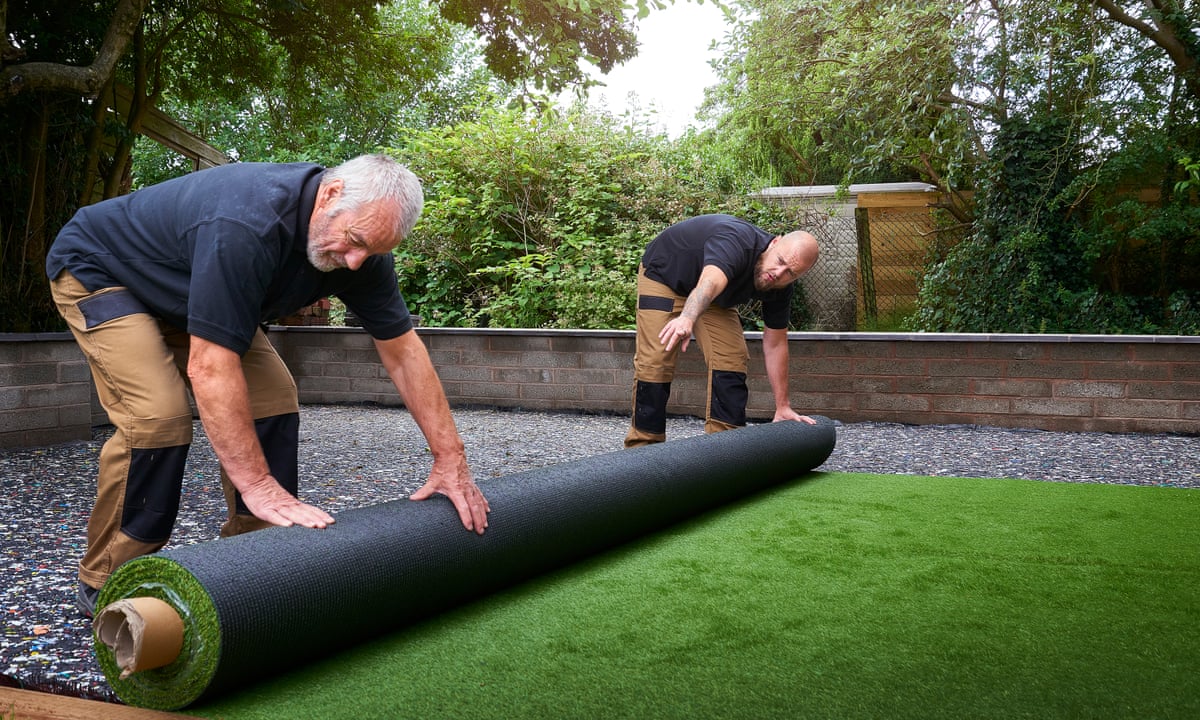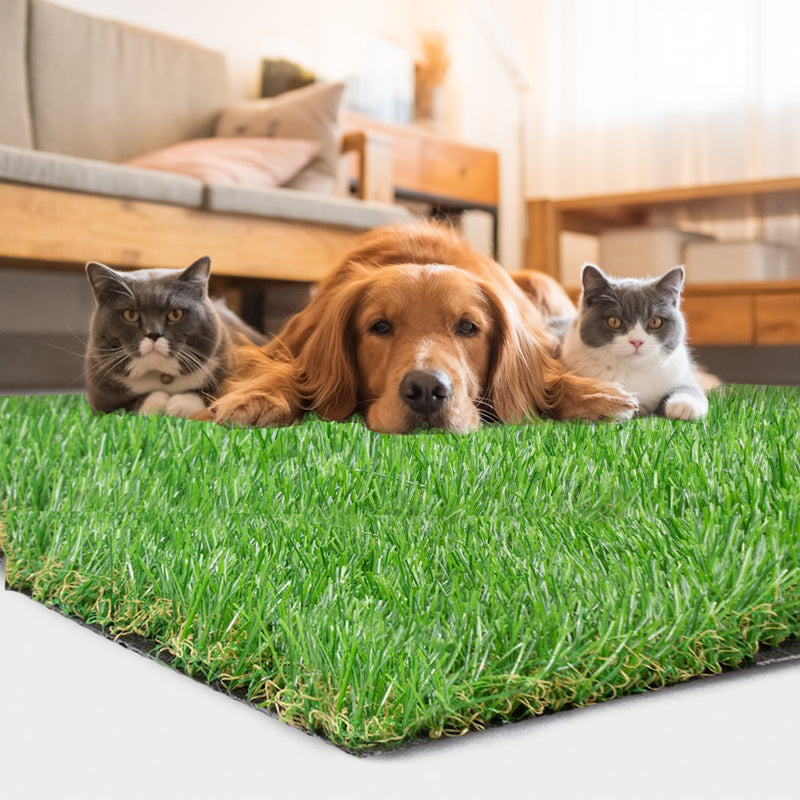Budget-Friendly Turf Installation Phoenix AZ for a Low-Maintenance Lawn Solution
Budget-Friendly Turf Installation Phoenix AZ for a Low-Maintenance Lawn Solution
Blog Article
Delve Into the Environmental Benefits of Opting for Synthetic Grass Solutions
The fostering of artificial lawn solutions offers an engaging chance to attend to pushing ecological challenges. By dramatically minimizing water use and decreasing the application of harmful chemicals, these options not just promote lasting landscape design yet likewise shield local ecosystems.
Water Conservation Benefits
One of the most considerable advantages of synthetic grass is its ability to save water. Typical turf lawns call for significant watering, particularly in locations susceptible to dry spell or water restrictions. On the other hand, synthetic grass does not require watering, dramatically lowering the general demand for water resources. This feature is especially valuable in arid regions where water deficiency is a pushing worry.
By eliminating the need for regular watering, synthetic turf contributes to sustainable landscape techniques and aids alleviate the ecological effect of excessive water intake. The preservation of water extends to the decrease of overflow, which can lead to soil erosion and river pollution.
Furthermore, the setup of synthetic grass enables districts and home owners to allocate water sources a lot more successfully, concentrating on crucial uses such as alcohol consumption water and farming. The shift towards synthetic grass not only promotes responsible water usage yet also straightens with wider environmental objectives focused on preserving all-natural sources.
As communities significantly focus on sustainability, the water conservation benefits of synthetic lawn present a compelling situation for its adoption in property and industrial landscaping tasks.
Lowered Chemical Use
The transition to synthetic grass dramatically decreases the reliance on chemical therapies frequently made use of in all-natural grass upkeep. Conventional turf monitoring normally entails the application of pesticides, herbicides, and fertilizers to promote growth and control pests. These chemicals can pose risks to human wellness, regional wild animals, and the environment, adding to dirt and water contamination.
In comparison, synthetic lawn removes the need for these dangerous substances. By reducing the release of artificial compounds into the community, synthetic turf promotes much healthier soil and water systems.
In addition, the absence of chemical overflow connected with artificial lawn setups aids safeguard neighborhood rivers from pollution, sustaining marine life and preserving biodiversity. Artificial turf companies phoenix. As communities increasingly prioritize lasting techniques, going with synthetic grass provides a viable solution that straightens with ecological preservation goals. With this shift, residential or commercial property owners can enjoy lavish green spaces without endangering ecological wellness, leading the method for a much more sustainable future
Reduced Carbon Impact

Furthermore, the installation of artificial lawn can result in significant water preservation. Natural grass need considerable quantities of water for irrigation, which not only includes to the carbon footprint connected with water extraction and treatment but likewise stress neighborhood water sources. On the other hand, synthetic grass requires marginal upkeep, calling for no watering, thereby considerably decreasing water usage and its associated energy costs.
In addition, the long life of synthetic grass adds to its decreased carbon impact. With a life-span of up to 15 years or more, the requirement for regular replacements is lessened, causing much less waste and reduced energy intake in manufacturing and getting rid of standard turf alternatives. In general, synthetic lawn offers a sustainable alternative for environmentally mindful landscaping.
Habitat Conservation
Environment conservation is an important factor to consider in the debate over landscape design choices, particularly when comparing synthetic grass to natural lawn. Natural browse this site yard yards typically require substantial maintenance, including the usage of pesticides, fertilizers, and herbicides, which can negatively impact local environments. These chemicals can seep right into the dirt and waterways, hurting native flora and animals and disrupting neighborhood habitats.
In comparison, fabricated grass offers an opportunity to minimize the environmental impact of landscape design. By choosing artificial turf, property owners can lessen the disruption of natural habitats connected with typical yard care techniques. Synthetic turf gets rid of the need for unsafe chemicals, therefore safeguarding close-by wildlife and maintaining the honesty of surrounding ecosystems. The setup of artificial grass can lead to the conversion of former turf locations into more biodiverse landscapes, such as pollinator yards or native plant locations, which can support regional wild animals.
Inevitably, the transition to synthetic grass not only conserves water and reduces upkeep initiatives yet additionally fosters a much more harmonious partnership between human tasks and the natural setting, promoting habitat preservation at the same time.
Long-Term Sustainability
Long-term sustainability is an essential consider examining the advantages of man-made learn this here now turf over standard yard yards. One of the most significant benefits of synthetic lawn is its longevity; it can last approximately 15-20 years with marginal upkeep, whereas natural turf requires regular reseeding and replacement. This durability decreases the requirement for consistent sources, such as water, fertilizers, and pesticides, which are important for preserving a healthy turf yard.
In addition, synthetic grass contributes to a reduction in carbon discharges connected with lawn treatment equipment. Typical grass typically call for gas-powered lawn mowers, trimmers, and blowers, all of which add to air contamination. Phoenix turf companies. In comparison, synthetic grass removes the need for such equipment, promoting a cleaner atmosphere
In addition, the production of man-made turf progressively makes use of recycled products, enhancing its sustainability account. As makers embrace environment-friendly methods, the ecological footprint of synthetic grass continues to lessen.

Final Thought
The fostering of fabricated grass services presents considerable ecological advantages, including considerable water preservation, lowered dependence on hazardous chemicals, and a lower carbon footprint. Man-made grass help in maintaining natural habitats by reducing land disruption and advertising lasting sustainability via the usage of durable products. Jointly, these factors highlight the capacity of synthetic grass to add positively to ecological wellness and use a feasible option to typical landscape design practices in a progressively resource-conscious world.
In contrast, artificial grass visit site does not need watering, significantly lowering the overall need for water resources. By lessening the launch of synthetic compounds into the ecosystem, synthetic lawn advertises healthier soil and water systems.
Moreover, the installment of man-made turf can result in considerable water conservation. In comparison, artificial turf needs marginal upkeep, needing no watering, therefore dramatically minimizing water usage and its linked energy expenses.

Report this page